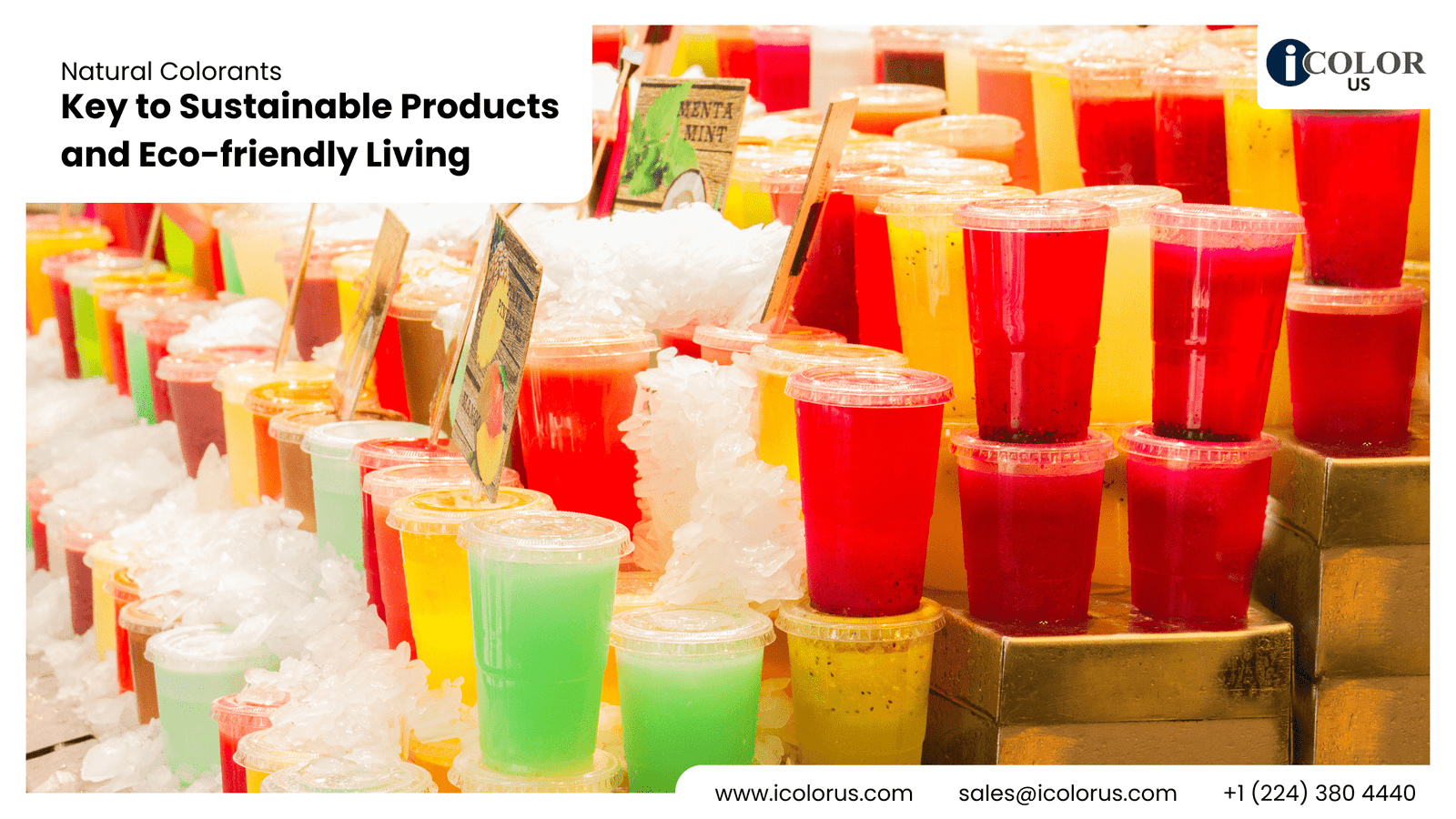Natural Colorants and Their Role in Sustainable Products
Introduction
Have you ever wondered where the vibrant hues in your favorite products come from? While synthetic colorants have dominated the market for years, there’s a growing shift towards natural colorants, especially in the realm of sustainable products. These colorants, derived from natural sources, not only offer a palette of beautiful colors but also bring numerous benefits to the table, from environmental friendliness to health advantages.
Understanding Natural Colorants
Definition of Natural Colorants
Natural colorants are pigments derived from natural sources such as plants, animals, and minerals. Unlike synthetic colorants, which are created through chemical processes, natural colorants come directly from nature, making them a more eco-friendly option.
Historical Use of Natural Colorants
Natural colorants have been used for thousands of years. Ancient civilizations like the Egyptians, Greeks, and Romans used natural dyes to color textiles, foods, and cosmetics. These colorants were not only valued for their beauty but also for their symbolic meanings and perceived health benefits.
Types of Natural Colorants
Plant-based Colorants
Plant-based colorants are the most common type of natural colorants. They are extracted from various parts of plants, including leaves, roots, fruits, and flowers.
- Examples and Sources
- Turmeric: A bright yellow colorant derived from the root of the turmeric plant.
- Beetroot: Provides a deep red color, commonly used in food products.
- Spinach: Yields a green pigment used in both food and textiles.
Animal-based Colorants
Animal-based colorants are less common but have been used historically, especially in traditional crafts and industries.
- Examples and Sources
- Cochineal: A red dye obtained from cochineal insects, used in food and cosmetics.
- Tyrian Purple: A rare and expensive purple dye made from sea snails, historically significant in ancient royal garments.
Mineral-based Colorants
Mineral-based colorants are derived from naturally occurring minerals and are often used in paints and cosmetics.
- Examples and Sources
- Ochre: A yellow to red pigment made from iron oxide.
- Malachite: A green pigment derived from copper carbonate hydroxide.
Benefits of Natural Colorants
Environmental Benefits
Natural colorants are biodegradable and have a smaller environmental footprint compared to synthetic colorants. They reduce the pollution caused by chemical manufacturing processes and lower the risk of harmful substances entering the ecosystem.
Health Benefits
Natural colorants are often safer for human health. Synthetic colorants can cause allergic reactions and other health issues, whereas natural colorants are generally non-toxic and hypoallergenic.
Economic Benefits
The production of natural colorants can support sustainable agriculture and local economies. By cultivating plants for dyes, farmers can diversify their crops and reduce dependence on single cash crops, leading to more stable incomes.
Natural Colorants in Food Industry
Common Natural Food Colorants
The food industry has increasingly embraced natural colorants due to consumer demand for cleaner labels and healthier products.
- Examples
- Annatto: Extracted from the seeds of the achiote tree, used for a yellow to orange color.
- Paprika: Provides a range of red to orange hues and is derived from ground peppers.
- Spirulina: A blue-green algae that gives a vibrant blue color.
Benefits Over Synthetic Colorants
Natural food colorants are perceived as safer and healthier. They often contain additional nutrients and antioxidants, contributing to the overall health benefits of the food products.
Case Studies
Several companies have successfully integrated natural colorants into their products. For instance, Yoplait uses beet juice for a natural pink hue in its yogurts, and Kraft switched to natural colorants for its iconic mac and cheese.
Natural Colorants in Textiles
Traditional Dyeing Methods
Traditional dyeing methods using natural colorants are still practiced in various cultures. Techniques like batik, tie-dye, and handloom weaving often employ natural dyes.
Modern Applications
Modern textile manufacturers are also turning to natural dyes to meet the growing demand for sustainable fashion. Brands like Patagonia and Eileen Fisher use natural colorants in their eco-friendly clothing lines.
Sustainability Impact
Using natural colorants in textiles reduces the environmental impact of fashion production. It minimizes the release of harmful chemicals into water bodies and decreases the carbon footprint of the manufacturing process.
Natural Colorants in Cosmetics
Commonly Used Natural Colorants
The cosmetics industry is increasingly using natural colorants to create safer and more sustainable products.
- Examples
- Carmine: A red dye made from cochineal insects, used in lipsticks and blushes.
- Iron Oxides: Provide a range of colors from yellow to red and are used in foundations and eyeshadows.
- Mica: A mineral-based colorant that gives a shimmering effect in makeup products.
Skin Health Benefits
Natural colorants are often gentler on the skin, reducing the risk of irritation and allergic reactions. They also tend to be more compatible with sensitive skin types.
Industry Trends
There is a growing trend towards “clean beauty,” where consumers seek products free from harmful chemicals. Natural colorants play a crucial role in this movement, helping brands meet consumer demand for safer and more natural products.
Challenges and Limitations
Stability and Consistency
One of the main challenges of natural colorants is their stability. They can be sensitive to light, temperature, and pH, which can affect the consistency of the final product.
Cost and Availability
Natural colorants can be more expensive and harder to source than synthetic alternatives. This can pose a challenge for manufacturers looking to produce cost-effective products.
Regulatory Challenges
There are strict regulations regarding the use of natural colorants, especially in the food and cosmetics industries. Manufacturers must ensure that their products comply with these regulations, which can be a complex and costly process.
Innovations in Natural Colorants
Technological Advancements
Advances in technology are helping to overcome some of the challenges associated with natural colorants. Improved extraction methods and stabilization techniques are making natural colorants more viable for large-scale use.
Research and Development
Ongoing research is focused on discovering new sources of natural colorants and improving the performance of existing ones. This research is crucial for expanding the range of applications for natural colorants.
Future Prospects
The future looks bright for natural colorants. With increasing consumer demand for sustainable and eco-friendly products, the use of natural colorants is expected to grow significantly in the coming years.
Consumer Awareness and Demand
Growing Demand for Sustainable Products
Consumers are becoming more aware of the environmental and health impacts of the products they use. This awareness is driving demand for sustainable products, including those made with natural colorants.
Influence of Consumer Behavior
Consumer behavior plays a significant role in shaping the market. As more people choose products with natural colorants, manufacturers are motivated to meet this demand by incorporating these colorants into their products.
Case Studies
Successful Brands Using Natural Colorants
Many brands have successfully integrated natural colorants into their products. For example, Burt’s Bees uses natural colorants in its lip balms and other cosmetics, emphasizing the brand’s commitment to natural and sustainable products.
Market Impact
The market impact of natural colorants is significant. Brands that use natural colorants often see increased consumer loyalty and positive brand perception, which can translate into higher sales and market share.
Comparative Analysis
Natural vs. Synthetic Colorants
While synthetic colorants offer consistency and cost advantages, natural colorants provide environmental and health benefits that are increasingly important to consumers.
Long-term Benefits and Drawbacks
The long-term benefits of natural colorants include sustainability, safety, and supporting local economies. However, challenges such as cost and stability must be addressed to maximize their potential.
How to Incorporate Natural Colorants at Home
DIY Natural Colorant Recipes
You can easily incorporate natural colorants into your everyday life with some DIY recipes. For instance, turmeric can be used to color rice, and beet juice can add a pink hue to baked goods.
Practical Tips
- Use fresh ingredients: Freshly sourced plants provide the most vibrant colors.
- Experiment with different sources: Try different fruits, vegetables, and spices to achieve various hues.
- Be mindful of storage: Natural colorants can degrade over time, so store them in cool, dark places.
Environmental Impact
Reduction of Pollution
Using natural colorants helps reduce pollution by minimizing the release of harmful chemicals into the environment. This contributes to cleaner air and water.
Eco-friendly Production Processes
The production of natural colorants often involves eco-friendly practices such as organic farming and sustainable harvesting, which further reduce the environmental impact.
Conclusion
Natural colorants play a crucial role in the move towards sustainable products. Their environmental, health, and economic benefits make them a viable alternative to synthetic colorants. While challenges remain, ongoing innovations and increasing consumer demand are driving the growth of natural colorants across various industries. As we look to the future, the role of natural colorants in creating a more sustainable world is set to expand significantly.
FAQs
What are natural colorants?
Natural colorants are pigments derived from natural sources such as plants, animals, and minerals, used to impart color to various products.
Are natural colorants safe for all skin types?
Generally, natural colorants are safer for the skin than synthetic ones, but it’s always best to check for any specific allergies or sensitivities.
How can I identify natural colorants in products?
Look for labels that specify the source of the colorants and check for certifications like organic or eco-friendly.
What are the economic impacts of using natural colorants?
Using natural colorants can support sustainable agriculture and local economies by providing farmers with alternative income sources.
How do natural colorants contribute to sustainability?
Natural colorants reduce pollution, support eco-friendly production processes, and offer a safer alternative to synthetic colorants, contributing to overall sustainability.





